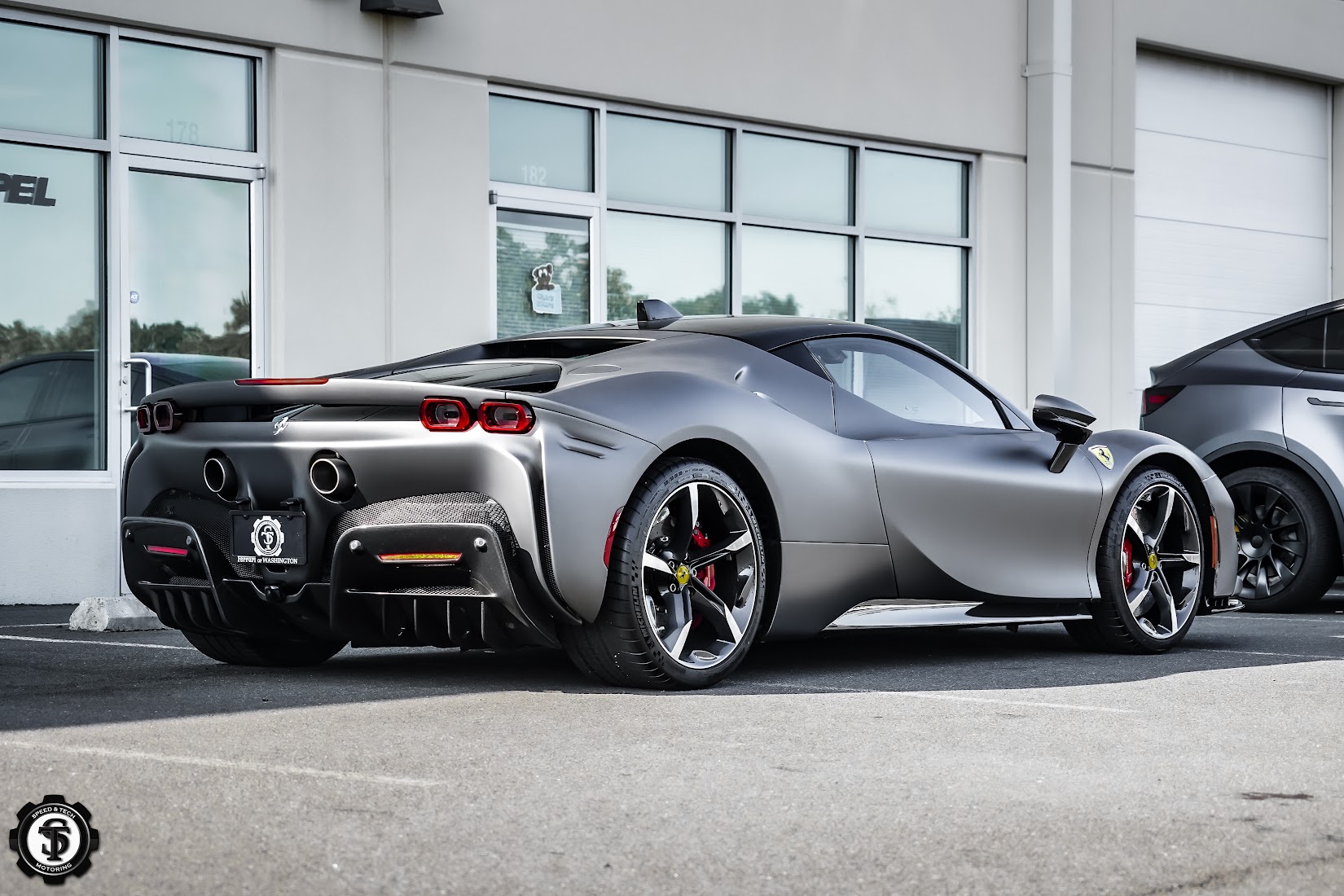Window tinting isn’t just about darkening your car windows to look sleek or stylish. It’s an impressive blend of science and technology designed to provide comfort, enhance privacy, and even protect your health. If you’ve ever wondered what goes into creating that thin film on your car or home windows, this article breaks it down for you. Let’s dive into the fascinating world of window tinting technology.
What is Window Tinting?
At its core, window tinting involves applying a thin film to the interior or exterior of a window. This film is made from advanced materials engineered to control sunlight, heat, and glare while improving energy efficiency and providing privacy. Sounds simple, right? Well, the process and technology behind it are far from basic.
The Science Behind Window Tinting
Window tinting technology relies on principles of light absorption, reflection, and transmission. Specialized films are designed to block specific wavelengths of light, including harmful ultraviolet (UV) rays, infrared (IR) radiation, and excessive visible light. The balance between these properties determines the film’s effectiveness.
1. Blocking Harmful UV Rays
UV-blocking technology is a game-changer. High-quality tint films can block up to 99% of UV rays. This not only protects your skin but also prevents the interior of your car from fading or cracking over time.
2. Infrared Heat Rejection
Infrared radiation from the sun causes your car to heat up like an oven. Infrared-blocking films use nanotechnology to reject heat, keeping the cabin cooler and reducing the need for air conditioning.
3. Visible Light Transmission (VLT)
VLT is the percentage of visible light that passes through the tinted window. Lower VLT percentages mean darker tints, while higher percentages offer a lighter shade. The right balance of VLT enhances comfort without compromising visibility.
Types of Window Tinting Films
Different types of window films cater to specific needs. Here’s an overview of the most common options:
1. Dyed Films
Dyed films are the most affordable option. They work by absorbing heat and reducing glare. While they look great and provide privacy, they don’t offer the same level of heat rejection as advanced films.
2. Metalized Films
Metalized films incorporate metallic particles to reflect heat and light. They’re durable and effective but may interfere with electronic signals like GPS or cell reception.
3. Ceramic Films
Ceramic films are the gold standard of tinting technology. They use advanced ceramic particles to block heat and UV rays without any metal interference. These films are highly durable, non-reflective, and offer superior performance.
4. Carbon Films
Carbon films feature a matte finish that blocks heat and UV rays effectively. They’re more affordable than ceramic films and won’t fade over time.
How Window Tinting Films Are Made
Creating window tinting films is a precise and multi-step process. Each layer is carefully engineered to achieve a specific function. Here’s how it works:
1. Film Composition
Window films typically consist of multiple layers:
- Polyester Base: Provides structural integrity.
- Dyed or Metalized Layer: Offers light absorption and reflection.
- Adhesive Layer: Secures the film to the glass.
- Scratch-Resistant Coating: Ensures longevity and durability.
2. Advanced Manufacturing Techniques
Manufacturers use techniques like sputtering and vapor deposition to incorporate materials like metal or ceramic particles into the film. These processes ensure even distribution and optimal performance.
Technological Advancements in Window Tinting
Window tinting technology has come a long way in recent years. From traditional dyed films to cutting-edge nanotechnology, innovation continues to enhance performance and durability.
1. Nanotechnology
Nanotechnology involves manipulating materials at a microscopic level. This allows for the creation of ultra-thin films that block heat and UV rays more effectively than ever before.
2. Smart Tinting
Smart tinting films can adjust their level of tint based on light intensity. They use electrochromic or photochromic technology to dynamically change shades, offering optimal comfort and visibility.
3. UV Stabilizers
Modern films include UV stabilizers that prevent the film from degrading or fading over time, ensuring long-lasting performance.
Benefits of Advanced Window Tinting Technology
Window tinting is more than just an aesthetic upgrade. Here’s how it can transform your driving experience:
1. Improved Comfort
Tinted windows keep your car cooler, even on scorching summer days. This means less reliance on air conditioning and more enjoyable drives.
2. Enhanced Privacy and Security
Tinted windows obscure the view into your car, keeping your belongings safe from prying eyes. Some films are even shatter-resistant, providing an added layer of security.
3. Energy Efficiency
By reducing heat transfer, window tinting minimizes the strain on your car’s air conditioning system, improving fuel efficiency.
4. Eye Protection
Glare from the sun can be blinding. Tinted windows reduce glare, making it easier and safer to drive.
How to Choose the Right Tint for Your Needs
With so many options available, how do you pick the right tint? Consider these factors:
1. Climate Conditions
In areas like North Little Rock, where summers can be hot and sunny, opt for a film with excellent heat rejection and UV-blocking properties.
2. Legal Requirements
Each state has laws regulating window tint levels. Ensure your choice complies with local regulations.
3. Budget
While ceramic and carbon films offer superior performance, they’re pricier than dyed or metalized options. Weigh your budget against your needs.
TopTint Mobile Window Tinting Serving the Booker Community and Beyond in North Little Rock, Arkansas
TopTint Mobile Window Tinting is dedicated to serving the diverse needs of the local community of North Little Rock including individuals residing in neighbourhoods like Booker. With its convenient location near landmarks such as MARCS (Mid Arkansas Radio Controlled Society, Inc.), Stark Bend and major intersections like Eanes Rd and E 46th St, (coordinates: 34.789858, -92.173180), we offer Window Tinting services.
Get the Window Tinting services in North Little Rock at Booker.
Navigate from Booker to TopTint Mobile Window Tinting Now
The Installation Process
Proper installation is crucial for optimal performance. A professional installer will clean the windows, cut the film to size, and apply it using specialized tools to eliminate bubbles or imperfections.
Maintaining Your Tinted Windows
To prolong the life of your window tint, follow these tips:
- Avoid rolling down windows for at least 48 hours after installation.
- Use a soft, non-abrasive cloth for cleaning.
- Stick to ammonia-free cleaners to prevent damage.
Why Technology Matters in Window Tinting
The quality of your window tinting experience depends heavily on the technology behind it. Advanced films offer better performance, durability, and overall value, making them a smart investment for any driver.
Conclusion
Window tinting is more than a cosmetic enhancement—it’s a blend of science and technology designed to improve your comfort, safety, and driving experience. With innovations like nanotechnology and smart tinting, the future of window tinting is brighter than ever.
FAQs
1. Can window tinting reduce my car’s interior temperature?
Yes, high-quality films can significantly reduce interior temperatures by blocking heat and UV rays.
2. How long does window tint last?
With proper maintenance, modern tints can last 5-10 years or more, depending on the material.
3. Are ceramic tints worth the cost?
Absolutely. Ceramic tints offer superior heat rejection, UV protection, and durability, making them a great long-term investment.
4. Is it possible to remove old tinting film?
Yes, old tint can be removed professionally or with the right tools and patience.
5. Does window tinting affect visibility at night?
High-quality tints are designed to reduce glare without compromising visibility, even in low-light conditions.



